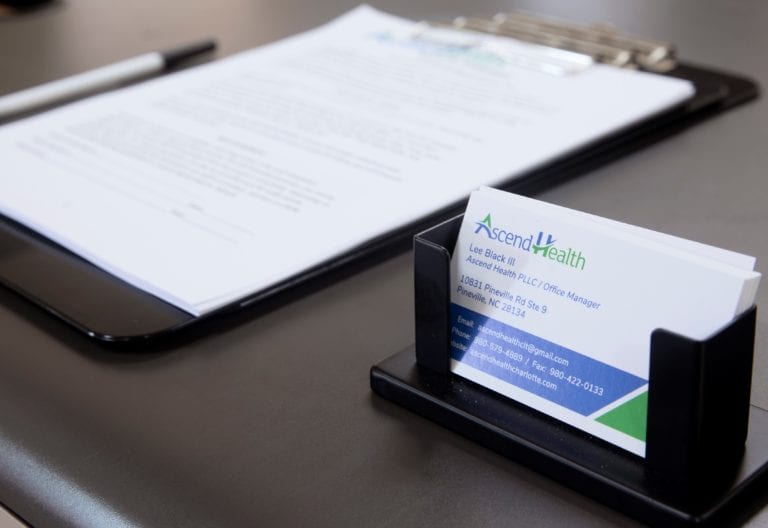Understanding medication-assisted treatment
If you’re exploring an insurance verified MAT program, you’re on the right track to accessing high-quality, evidence-based care without unexpected out-of-pocket costs. Medication-assisted treatment (MAT) combines FDA-approved medications with counseling and behavioral therapies to address both the physical dependence and psychological aspects of opioid use disorder. This dual approach helps reduce cravings, eases withdrawal symptoms, and supports your long-term recovery journey.
What is MAT?
MAT is a comprehensive model of care that integrates medication, therapy, and support services. Unlike abstinence-only approaches, it acknowledges the neurobiological changes caused by chronic opioid use and leverages pharmacotherapy to stabilize brain chemistry. By pairing medication with counseling, MAT fosters new coping strategies, reinforces positive behaviors, and builds resilience against relapse.
How MAT works
Medications used in MAT bind to opioid receptors in the brain, blocking the euphoric effects of illicit opioids and preventing withdrawal. As you stabilize on a prescribed dose, cravings diminish and you regain the mental bandwidth to engage in therapy. Over time, clinicians may taper medication under close supervision, transitioning you toward sustained recovery.
Key medications
Two primary medications drive most outpatient programs:
- Suboxone (buprenorphine/naloxone): Buprenorphine reduces withdrawal and cravings, while naloxone deters misuse if the film or tablet is dissolved and injected.
- Buprenorphine maintenance therapy: As a partial agonist, buprenorphine occupies receptors with a ceiling effect that lowers overdose risk. Learn more about tailored buprenorphine care in our buprenorphine addiction treatment program.
Both options have strong safety profiles and are approved for long-term use when clinically appropriate.
Role of counseling and support
Medication alone is not enough to address the root causes of opioid use. Counseling—whether individual, group, or family—helps you:
- Identify triggers and high-risk situations
- Develop coping mechanisms and stress-management skills
- Rebuild relationships and social supports
Combining medication with evidence-based therapies such as cognitive behavioral therapy enhances treatment outcomes and fosters lasting change.
Exploring insurance coverage options
MAT affordability hinges on how your insurance plan covers medications, provider visits, and ancillary services. Understanding federal requirements and plan-specific details empowers you to select a program that aligns with your benefits.
Federal parity and ACA requirements
The 2008 Mental Health Parity and Addiction Equity Act mandates that group health plans provide equivalent benefits for substance use disorders as they do for medical or surgical care. As a result, most private and employer-sponsored plans must cover MAT [1]. Under the Affordable Care Act, this parity extends to marketplace and Medicaid plans, broadening access to Suboxone and buprenorphine treatment [2].
Coverage by plan type
Insurance coverage can vary widely. The table below summarizes common benefits:
| Plan type | Covered medications | Notes |
|---|---|---|
| Medicaid (state programs) | Buprenorphine, naltrexone, methadone | 31 states cover methadone in outpatient opioid treatment programs ([AAC]) |
| Medicare & Medicare Advantage | At least one formulation of each medication | Experts recommend increased payment for office-based MOUD [3] |
| Private/employer-sponsored plans | Buprenorphine, naloxone, naltrexone (varies) | Methadone often excluded; check carrier policies and network status |
Review your plan documents or call member services to confirm medication tiers, co-pays, and any utilization management requirements.
State Medicaid variations
Medicaid benefits differ by state. While many FFS programs include methadone maintenance treatment, buprenorphine coverage criteria—such as prior authorization and dosing limits—can vary. Visit your state Medicaid website or speak with a case manager to understand local rules.
Alternative funding options
If coverage gaps arise, consider:
- Patient assistance programs: Manufacturer or nonprofit grants for Suboxone or buprenorphine
- State initiatives: Specialty funds allocated for opioid treatment services
- Nonprofit support: Organizations that subsidize treatment costs for qualifying individuals
These resources can help you maintain continuity of care when insurance falls short.
Future payment models
Industry experts advocate for value-based MOUD payment approaches that tie reimbursement to quality metrics rather than service volume. Early adoption of pay-to-report and upside-risk-only models aims to improve access and outcomes without rigid utilization limits [4].
Verifying your MAT benefits
Navigating insurance details ensures you maximize your benefits and avoid surprises. Follow these steps to confirm coverage before enrolling in a program.
Check your insurance network
First, verify that your chosen provider participates in your plan’s network. Contact your insurer or use the online directory to find an in-network suboxone treatment clinic. In-network services generally result in lower co-pays and coinsurance.
Understand cost-sharing
Knowing your cost-sharing responsibilities helps you budget for treatment.
Co-pays vs deductibles
- Co-pay: A fixed fee you pay per visit or prescription
- Deductible: The amount you must pay out-of-pocket before insurance begins covering services
Out-of-pocket maximums
Once you reach this annual cap, your plan covers 100% of covered services. Confirm your maximum to avoid unexpected expenses.
Secure prior authorizations
Some insurers require prior authorization for Suboxone or buprenorphine prescriptions. Work with your provider’s billing team to submit:
- A medication request form
- Clinical notes outlining your diagnosis and treatment history
- Any supporting studies or program guidelines
Timely authorization prevents delays in your medication schedule.
Appeal denial and next actions
If a claim is denied:
- Review the denial explanation in your EOB (Explanation of Benefits)
- Request a peer-to-peer review between your provider and the insurer’s medical director
- Submit an appeal with additional clinical documentation
- Escalate to external review if internal appeal is unsuccessful
Proactive advocacy ensures that coverage reflects your clinical needs.
Comparing program features
When choosing an outpatient opioid recovery program, assess which services align with your lifestyle, treatment goals, and insurance benefits.
Onsite vs telehealth services
- Onsite programs: Offer face-to-face medication dispensing and counseling, ideal if you prefer in-person interaction.
- Telehealth MAT programs: Provide remote video visits and e-prescriptions, reducing travel time and enhancing scheduling flexibility [5].
Both formats adhere to the same clinical standards and ensure continuity of care.
Same-day access
Rapid access to medication can be crucial during acute withdrawal. Clinics offering a same day suboxone appointment typically streamline intake, complete initial assessments, and authorize prescriptions in a single visit, reducing barriers to starting MAT.
Confidential, supportive care
Your privacy matters. Seek programs that emphasize:
- Licensed addiction specialists and medical directors
- Secure record-keeping and HIPAA-compliant telehealth platforms
- Individualized treatment plans with regular follow-ups [6]
Holistic therapies and integration
Complementary services enhance resilience:
- Nutritional counseling and exercise programs
- Mindfulness, yoga, and stress management workshops
- Case management for housing, employment, and legal support
Integrating these elements fosters a well-rounded recovery environment.
Choosing a verified MAT program
Ascend Health’s evidence-based care
Ascend Health delivers a comprehensive MAT experience with Suboxone and buprenorphine maintenance therapy at its core. You’ll benefit from:
- Licensed clinicians specializing in opioid use disorder
- Insurance verification support to navigate authorizations and co-pays
- Same-day and telehealth access for your convenience
- Coordination with primary care, mental health, and community resources
- Outpatient suboxone treatment program options tailored to your needs [7]
Insurance navigation support
Our dedicated team handles benefit verification, preauthorization submissions, and appeals on your behalf. By reducing administrative burdens, we ensure you focus on recovery rather than paperwork.
Patient experience and outcomes
Ascend Health’s integrated model combines medication, therapy, and peer support:
- Personalized care plans based on your medical history and preferences
- Ongoing outcome tracking to optimize dosing and address side effects
- Access to support groups and educational workshops
- Continuous follow-up to reinforce coping strategies and prevent relapse
This holistic approach improves retention in treatment and enhances quality of life.
Taking next steps
Schedule your appointment
Ready to begin? You can book a consultation online or by phone. Choose between a telehealth visit or an in-person intake, and let our staff guide you through scheduling and insurance verification.
Prepare for your first visit
To ensure efficient intake:
- Bring your insurance card and photo ID
- Compile a list of current medications and past treatment history
- Note any questions about therapy, medication, or program policies
Being prepared helps your care team create an accurate, individualized plan from day one.
Build a support network
Extended support is key to lasting recovery. Consider:
- Engaging in individual or group counseling
- Joining peer support groups or recovery communities
- Inviting family or close friends to participate in education sessions
A strong support system reinforces motivation and accountability.
Track your progress
Regular progress reviews help you and your provider adjust medication, therapy, and support services. Use a journal or mobile app to log:
- Cravings and withdrawal symptoms
- Medication adherence and side effects
- Milestones, goals, and overall well-being
Monitoring your journey enables data-driven adjustments for sustained success.
By understanding insurance verified MAT programs, exploring coverage options, and selecting a provider like Ascend Health, you can access the comprehensive care necessary for opioid recovery. Reach out today to verify your benefits and take a confident step toward lasting wellness.



